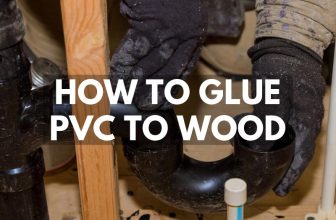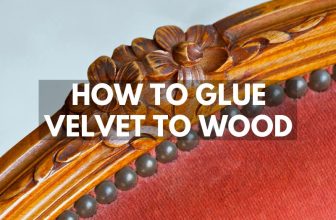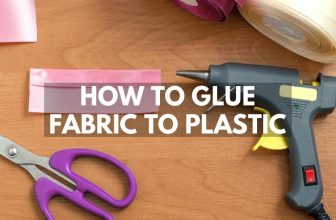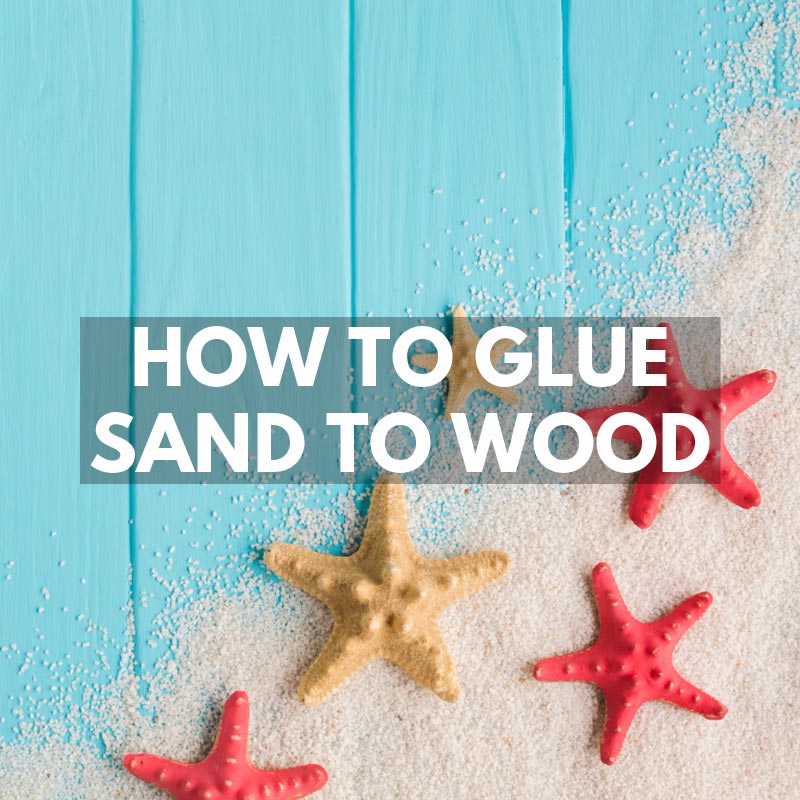
How To Glue Sand To Wood
If you want to know how to glue sand to wood, you should start by spreading a thin layer of your chosen glue across the wood, and then sprinkling the sand evenly over the glue. Allow the sand to dry, and then repeat the process if you want a deeper layer. When you have finished, add a varnish to protect the sand.
In this article, we’re going to explore everything you need to know about gluing sand to wood, including what kind of glue to use. If you’re looking to add colored sand or make sure that your glue dries clear, we’ll cover that too.
We are going to look at every step of sticking sand onto wood so you know exactly how to do this and so that your sand will stay in place for a long time. The last thing you want is for the sand to drop off and make a mess so be sure to follow the last step carefully.
Which Glue Should You Use For Sand To Wood?
There are 3 main kinds of glue that you should use for this job: PVA, varnish, or spray adhesive. All of these should do the trick. We’ll compare them below.
PVA
This is probably the most common kind of glue and it will provide you with a smooth, clear finish. This is ideal for covering both small areas and large areas because you can use an appropriately-sized brush. Apply it in thin layers for the best results.
Mont Marte PVA Glue Craft Glue is a great choice for crafting projects as it dries clear and is easy to apply with the fine nozzle. If you want to glue sand to wood on a large scale with PVA then you may want to get a larger container as these are more suited to art projects.
Varnish
Some people use varnish, and this can also work. It will let you apply the sand in a thin layer and may reduce the need to varnish the project when you’ve finished. You can use a tinted varnish to produce a different color, or a clear one so that the sand looks natural.
Minwax Polycrylic Protective Wood Finish is a type of satin varnish that you can use to adhere sand to the surface of wood. It will dry semi-glossy and will incorporate the sand into the mix so that it won’t ever fall off the wood. The reason we would recommend this is that as well as being a varnish it is also a good adhesive for small particles like sand.
Spray Adhesive
This is good if you want to cover a large area of the wood. It can be applied quickly across big expanses. Choose a clear one so that it doesn’t show underneath the sand, as colored ones might be visible between the grains.
3M Hi-Strength 90 Spray Adhesive is the best glue in a can that you can use for any project that requires spray glue. You simply shake the can for 10 seconds and you can blast liquid glue onto small or large areas in an instant. To control where the glue goes you may need to make a stencil to keep clean edges.
How To Prepare Sand And Wood Before Gluing
You can prepare the wood by sanding it down to create a smooth surface. This will help the glue get into the wood, and make sure you can level the sand off. If you don’t sand the wood first, you may get a bumpy, uneven result.
Use coarse sandpaper to start with, and then swap to a finer one. Wipe the surface with a damp cloth to remove any dust before moving on to the next step.
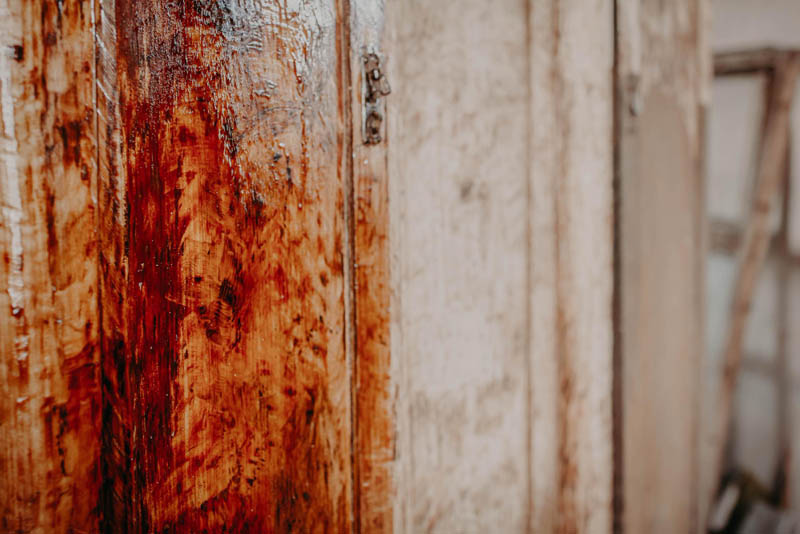
How To Apply Glue To Sand And Wood
Once your wood is smooth, you will need to paint or spray the chosen glue onto it. Allow the glue to become tacky, and then sprinkle a fine layer of sand across the top. Do not add a lot of sand, because only sand that has good contact with the adhesive will stick.
Once the first layer has dried, tap off any loose sand and apply more adhesive. Again let this get a little tacky and then sprinkle more sand on top. You can keep building layers like this, but allow each layer to dry completely first.
If you are adding different colored sand, work in sections so you don’t get the colors mixed. Apply one section and let it dry, and then add glue to the next area and sprinkle the next color on.
Once you have the desired level of sand on your piece of wood, you can leave it with the sand texture or seal it in with a final layer of adhesive.
How To Cure Sand And Wood Glue
Spray adhesive tends to dry quickly, but you should check the drying times on your specific bottle for more information on how long to leave it for. Do the same with varnish, as drying times can vary.
Most PVA will require about 30 minutes to 1 hour of drying. Thicker layers will take longer.
If you want a very even layer of sand, place a piece of plastic against the sand and then use a large clamp to hold it in place. This will press the sand down into a flat layer while it dries and should produce a better finish.
Conclusion
Overall, PVA is probably the best and most readily available glue to use when you are applying sand to wood. It dries clear and creates a strong bond with wood, and you can layer it easily. Always make sure you have sanded the wood before you start gluing it, as this maximizes the adhesion between the glue and the wood.







